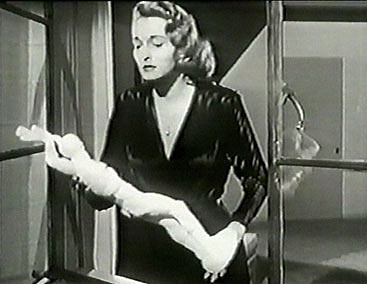
Born in 1960 in Brisbane (AU)
Lives and works in Sydney (AU) and New York City, New York (US)

1999
Video, colour, sound
Réalisée avec Gary Hillberg
Durée : 10'
Year of Purchase: 2002
It starts with a dialogue from Mike Nichols’ The Graduate. Dustin Hoffman says ‘Why do you want to talk about art?’ and a disillusioned Anne Bancroft answers ‘I don’t’. OK let’s not talk about it. Let’s show some. Rather than a subjective talk on her peers’ psychological and social condition through a story, Tracey Moffatt, in conjunction with Gary Hillberg, here offers a montage of excerpts from motion pictures depicting artist figures at work. A steady zapping through all the Hollywood artistic stereotypes, from positive to negative, from the exalted celebration of creative inspiration to the destructive violence of a devouring passion, and taking in fantasies, verbose pedantry, doubt, failure, hatred, dis¬gust, etc, on the way. An ambiguously demonstrative typology of the trivial motifs reproduced by a cinema that is domineering and vengeful towards its predecessors. Although it may seem at first glance unusual in the work of this Australian photographer and video maker, and a bit of a joke, as often in her work, this video addresses the question of memory and the crucial role played by audiovisual iconography in its formalization. Like the fantasies or representations of the popular imagination, Tracey Moffatt’s narrative images are always con¬structed around a strange combination of documentary reality and mass media aesthetics (cinema, TV, journalism). In so doing, she takes up a complex critical and to say the least ambivalent stance towards her subjects. Here, in particular, the subversion is only just visible, such is the formal seductiveness of this promotional clip, seemingly acting in connivance (hence a malaise) with what it is denouncing, pacing along the fuzzy boundary between homage and criticism, between incredulity towards the outrageous artifici¬ality of the devices and a fascination for the familiar Technicolor picture. On a deeper level, in her choice of extracts deliberately limited to Hollywood, i.e. a certain global mainstream cinema, the aboriginal artist points out with uncomfortable obviousness the predominance of the white bourgeois West in the modelling of an ‘artist’ profile. Using the image to remind us of the original photographic meaning of the word ‘cliché’, Tracey Moffatt gives action demonstrations of how the moving cinema picture ‘freezes’ its subject, how psychological characters embedded in the collective imagination have been totally invented by the Hollywood film industry with its insidious ability to flatten everything and keep telling the same old story.
Guillaume Désanges